Live Scoring
DANCE 'n TELL is a website and Facebook group that offers a curated guide to dance class in New York city founded by Lauren Ritzi, Benny Simon, and Alexandra Beller.
Live Scoring
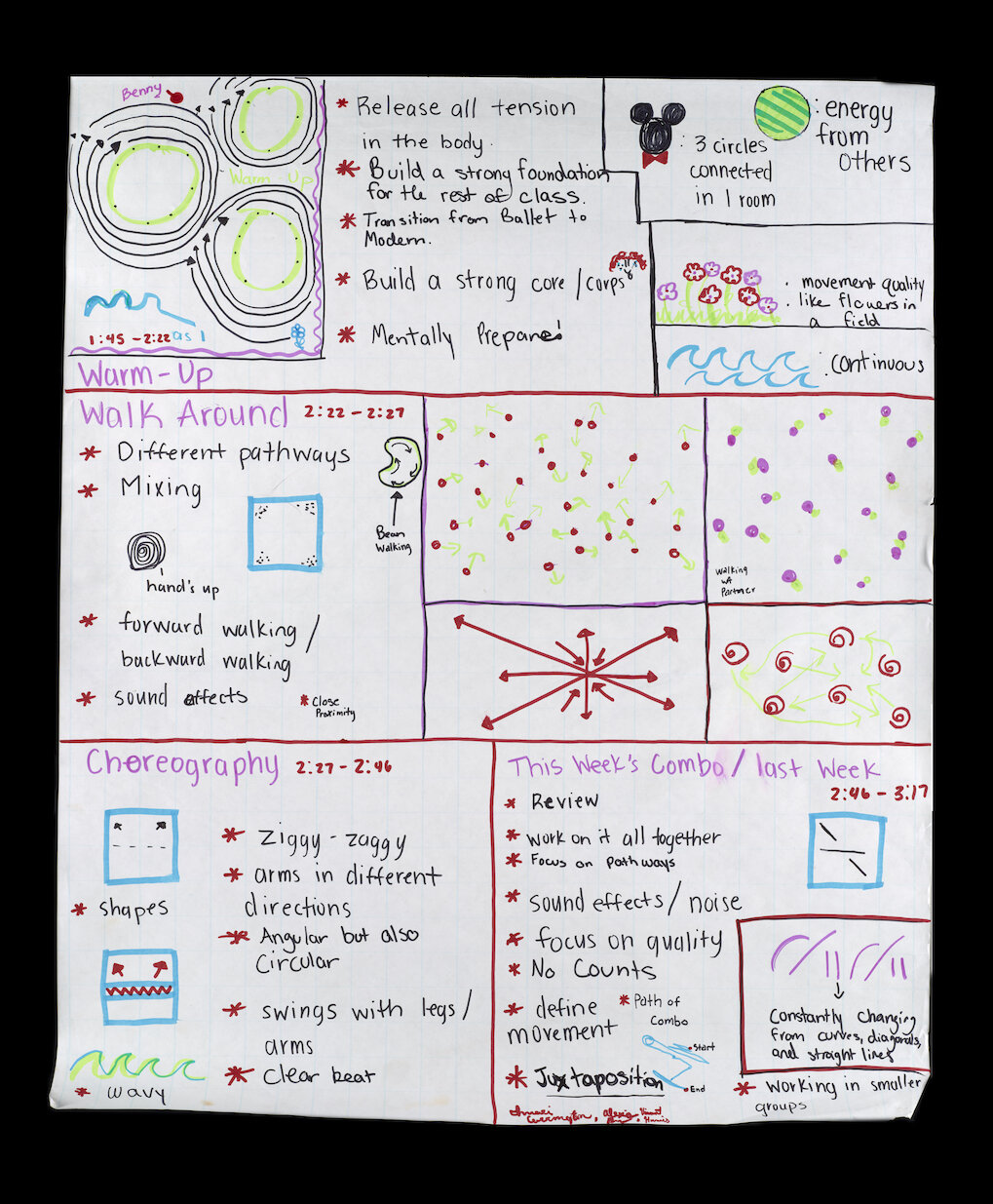
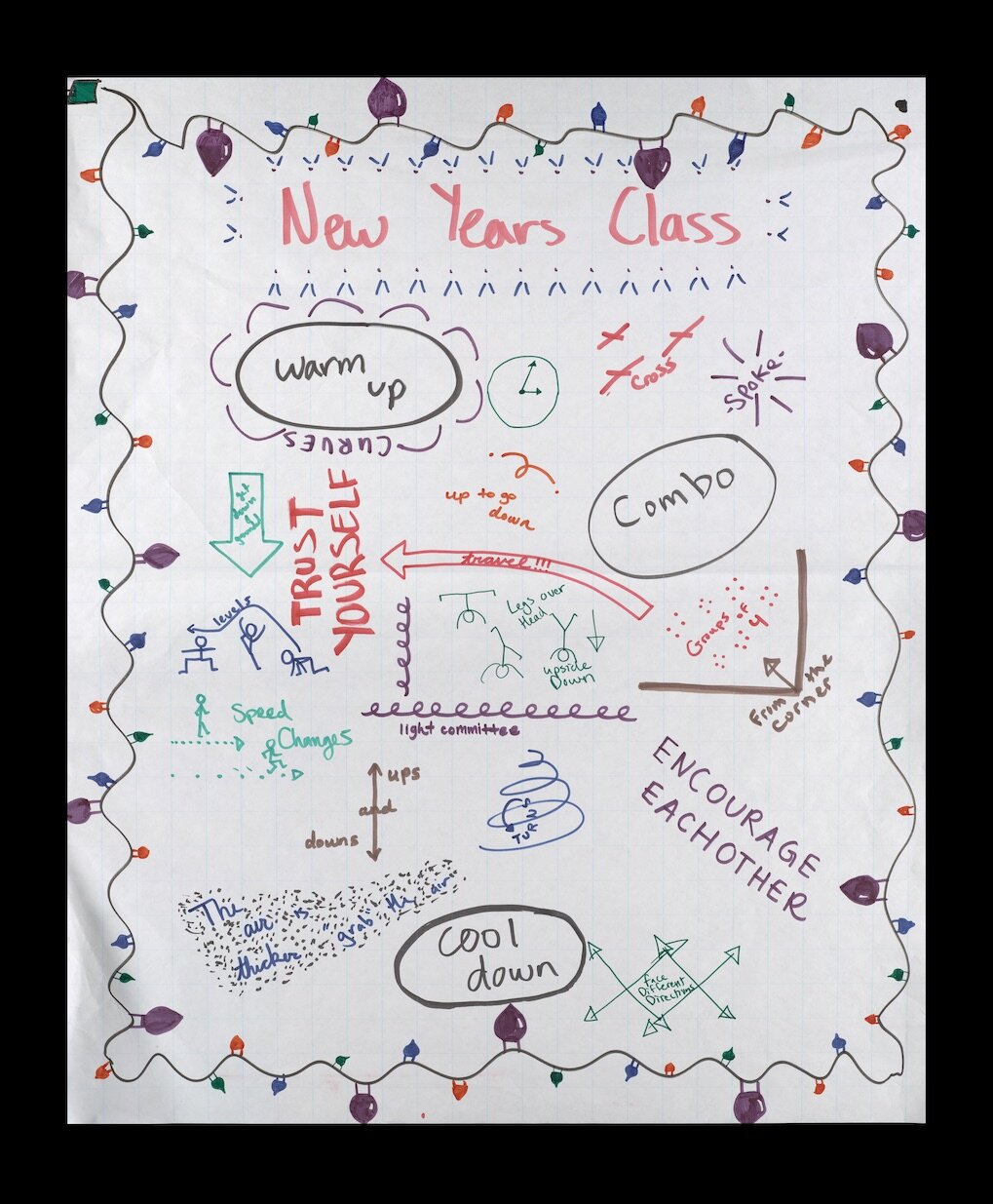
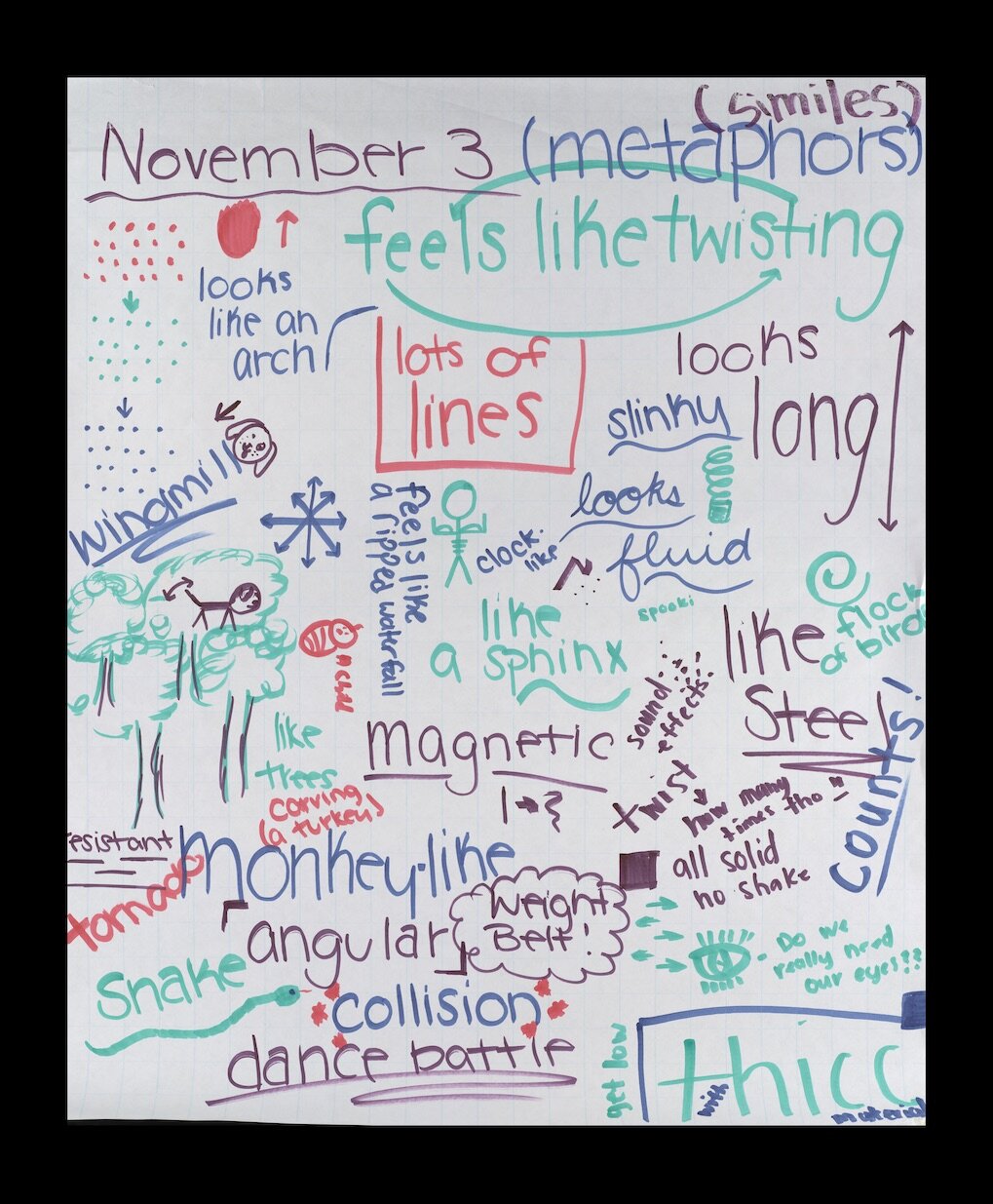
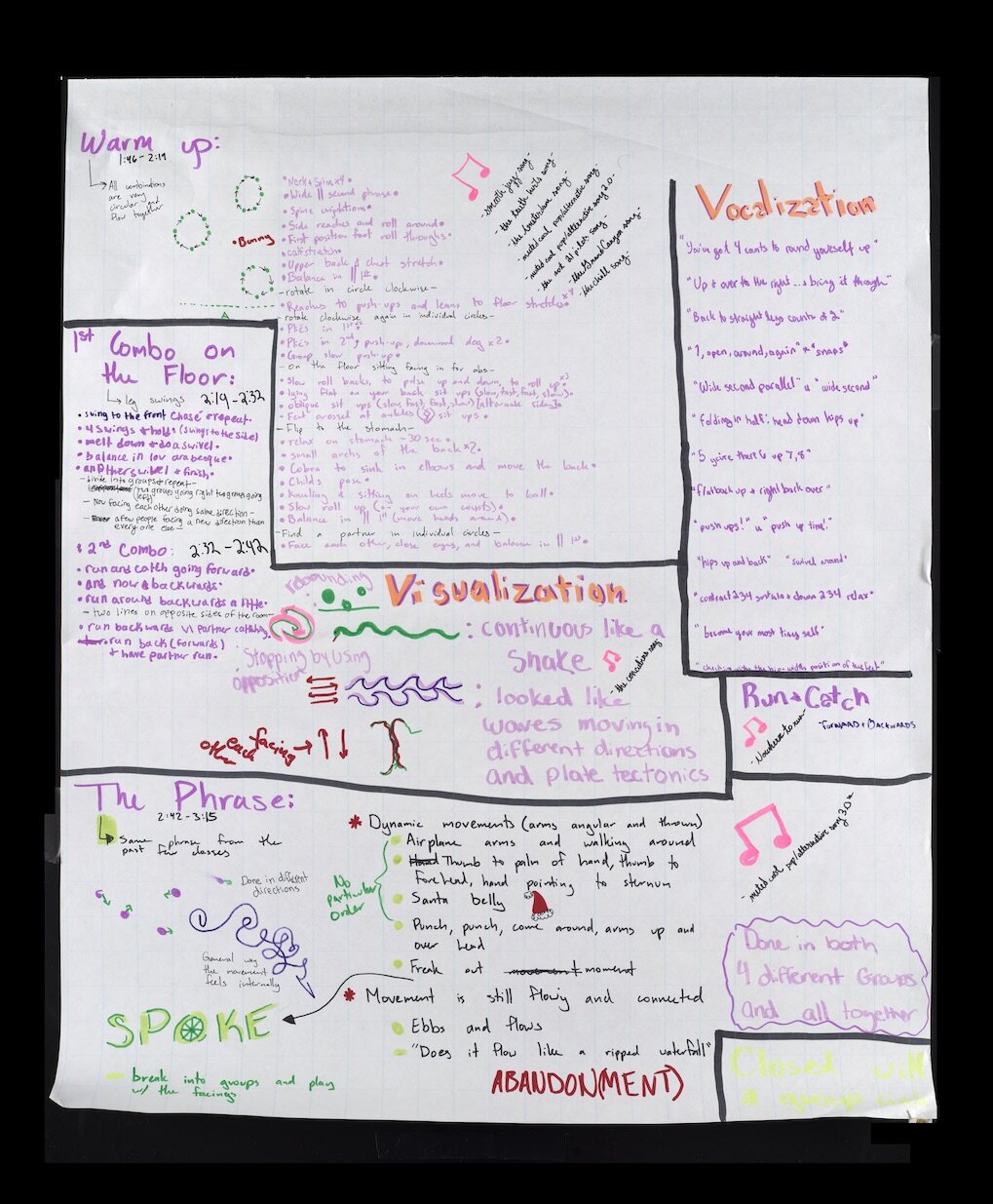

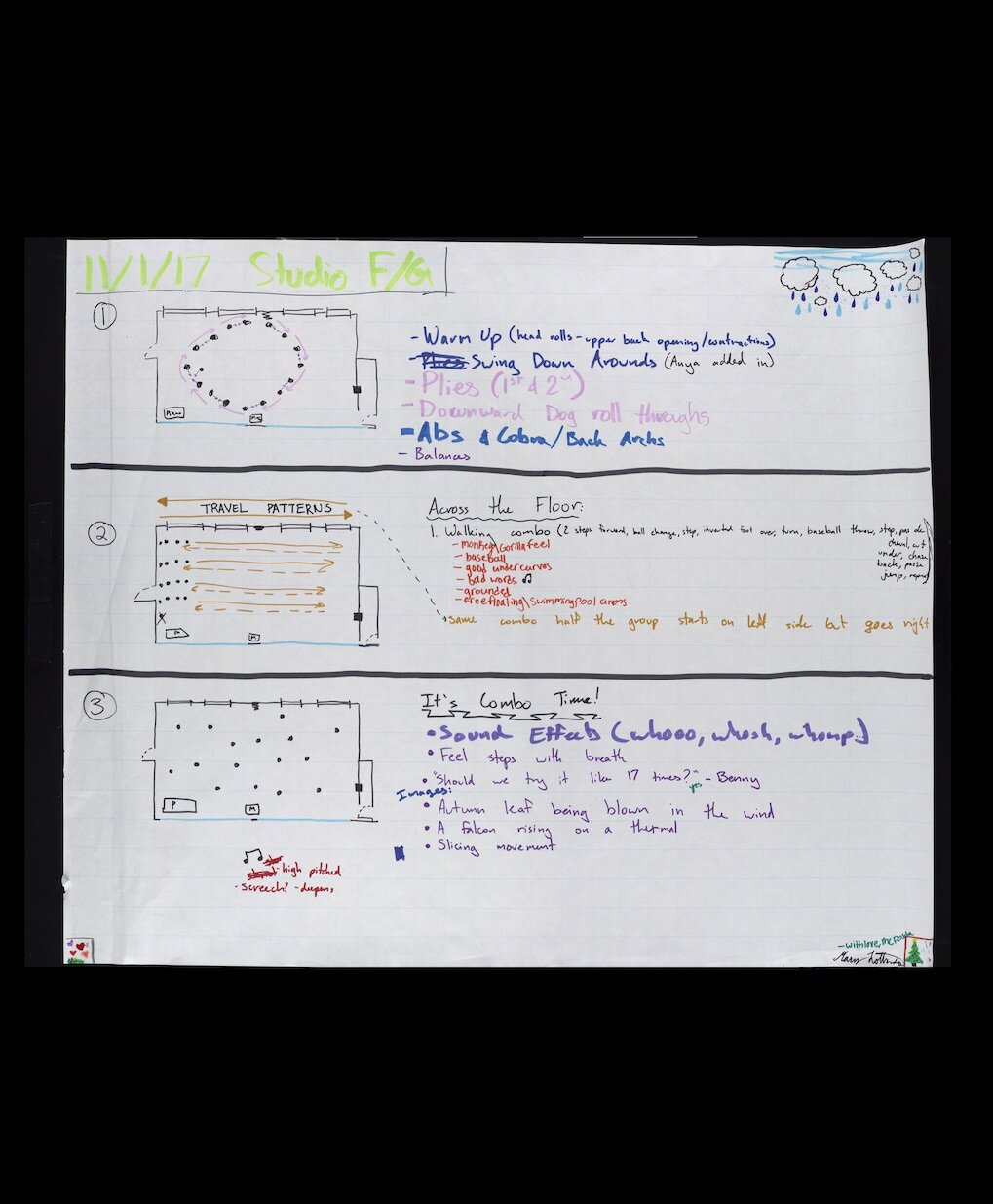
Excerpt from a paper presentation at the 2018 National Dance Education Organization conference:
As we endeavor to create more diverse, accessible, and inclusive spaces in our classrooms, I would like to consider the status of an underserved group of students in technique class: the dancer who is sitting out. In this paper I will discuss one way we might pursue the project of inclusivity through what I call Live Scoring. I offer this practice as an alternative to the “observe-and-write-some-stuff-down” worksheet assignments we often give to students who must “sit out” of class due to injury, lines, or other reasons. I suggest that Live Scoring can more directly engage those students with what is happening in the room and allow them to be active participants.
I arrived in class armed with a large pad of paper and colored markers. I gathered the class together and we discussed the different ways one might document a dance class. Recognizing that training students in Labanotation or even Motif is not realistic in a technique class, we drew on the students’ existing documentary skills—things like description, metaphor, illustration, pathways, and diagrams. This particular approach to scoring dance is informal and distinct from any formal notation systems.
Different from the worksheet assignment, live scoring encourages sustained attention to what is happening in the room. All three students remained clustered around the pad, alternately watching, scoring, and discussing the movement happening around them and how best to depict it. Situating them in front ensured that they were always seeing and being seen, and sometimes the dancing swirled around them. Their continuous engagement is evident in the way they organized the score along the timeline of the class. Everything we did is included.
Examples of the results are in the gallery above.
As class ended, we all gathered around the score. Immediately the dancers began to point out sections they recognized. “Oh, this is where the fast turns were!” or “I totally messed that part up.” If they could not connect a part of the score to their dancing, the student who scored it jumped in to describe how they were moving and why they wrote or drew it the way they did. For example, when a dancer asked what “like flowers in a field” meant, the student who scored that movement explained while opening their arms and lifting their head like the petals of a blooming rose. Some students began to reinterpret sections of the phrase from the score. Others grabbed markers to make additions or changes.
Here is where I believe accessibility, through its actions and expressions, becomes more closely bound to engagement. The live score is a site of accessibility for students of different identities and abilities to fully engage with learning experiences that are appropriate and useful for them.